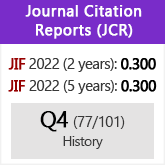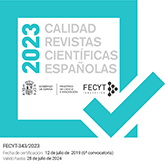The Politics of Pretence: Woman and Nation in Laura Restrepo’s Delirio
DOI:
https://doi.org/10.3989/chdj.2013.015Keywords:
Laura Restrepo, Colombia, Gender, Patriarchy, Madness, Lacan, Pablo Escobar, Drug Violence, Jealousy, Phantom, José Eustasio RiveraAbstract
This article examines the interrelationships among the text’s major themes: violence, dissimulation and delirium, at both the level of nation and also of family and individual. The dysfunctional character of the Loudoño family is reflected in the plight of the nation: while Agustina is the chief victim of her father’s violent outbursts, so the nation is traumatized by the violent outrages committed by the criminal ‘father’, Pablo Escobar. Restrepo shows how, in these circumstances, madness takes its place on the inside of Colombian culture, ceasing thereby to be a state of exception. It is pretence that drives Agustina mad; but Restrepo’s novel is not one-sidedly negative. She locates the possibility of a new order in Agustina’s challenge to patriarchal power through her defiance of her father and through her don de escribir that provides a gender-inflected counterpoint to her mother’s don de encubrir. Particular emphasis is given to the narrative reconstruction of the climactic scene when familial tensions finally spill over: though truth is revealed, the pretence survives unscathed. But Agustina’s own narrative provides a countervailing force: her language declines to conform to the syntax of reason, assuming instead the rhythms of madness. This madness can be seen as creative, a mode of escaping the patriarchal furrow of the male symbolic order and spurious male rationality.
Downloads
References
André, María Claudia (2009 ) “Deseo, represión y locura en Delirio de Laura Restrepo”. In La mujer en la literatura del mundo hispánico, edited by Alcira Arancibia, Juana and Tezanos-Pinto, Rosa. Westminster, Instituto Literario y Cultural Hispánico, CA, pp. 255–270.
Barraza Toledo, Vania (2007 ) “Espacio urbano de Bogotá”. In El universo literario de Laura Restrepo: Antología Crítica, edited by Sánchez-Blake, Elvira E. and Lirot, Julie. Taurus, Bogotá, pp. 273–291.
Barthes, Roland (1980) La chambre claire: note sur la photographie. L’Étoile, Gallimard, Le Seuil, Paris.
Belsey, Catherine (1994) Love Stories in Western Culture. Blackwell, Oxford.
Bowie, Malcolm (1987) Freud, Proust and Lacan: Theory As Fiction. Cambridge University Press, Cambridge.
Braidotti, Rosi (1991) Patterns of Dissonance: a Study of Women in Contemporary Philosophy. Polity Press, Cambridge. PMid:1783546
Braun, Herbert Tico (2007) “‘Qué haiga paz!’ The Cultural Contexts of Conflict in Colombia”. In Peace, Democracy, and Human Rights in Colombia, edited by Welna, Christopher and Gallón, Gustavo. University of Notre Dame Press, Notre Dame, Ind., pp. 23–59. PMid:17174314 PMCid:PMC2504412
Bronfen, Elizabeth (1998) The Knotted Subject: Hysteria and its Discontents. Princeton University Press, Princeton, NJ.
Bushnell, David (1993) The Making of Modern Colombia: a Nation in Spite of Itself. University of California Press, Berkeley.
Butler, J. (1993) Bodies that Matter: On the Discursive Limits of “Sex”. Routledge, New York; London.
Cardona López, José (2000) “Literatura y narcotráfico: Laura Restrepo, Fernando Vallejo, Darío Jaramillo Agudelo”. In Literatura y cultura: narrativa colombiana del siglo XX, edited by Jaramillo, María Mercedes, Osorio, Betty and Robledo, Ángela. Ministerio de Cultura, Bogotá, vol. II, pp. 378–406.
Castillo, Debra A. (1992) Talking Back: Toward a Latin American Feminist Literary Criticism. Cornell University Press, Ithaca and London.
Derrida, Jacques (1979) Writing and Difference. Routledge and Kegan Paul, London and Henley.
Derrida, Jacque.s (1991) Cinders. Lincoln and University of Nebraska Press.
Faulkner, William (1936) Absolom, Absolom!. Chatto & Windus, London. PMid:16746133 PMCid:PMC1263155
Felman, Shoshana (1985) Writing and Madness: Literature/Philosophy/Psychoanalysis. Cornell University Press, Ithaca, New York.
Felman, S., and Laub, D. (1992) Testimony: Crises of Witnessing in Literature, Psychoanalysis, and History. Routledge, New York and London.
Freud, Sigmund and Gay, Peter (1995) The Freud Reader. Vintage, London.
Gallup, Jane (1988) Thinking Through the Body. Columbia University Press, New York.
García Márquez (1995) [1967] Cien años de soledad. Cátedra, Madrid.
García Serrano, María Victoria (2007 ) “Los escenarios de la violencia: el hogar y la nación”. In El universo literario de Laura Restrepo, edited by Sánchez-Blake, Elvira E. and Lirot, Julie. Taurus, Bogotá, pp. 311–324.
Hobsbawm, E. J. (2002) Interesting Times: a Twentieth-century Life. Abacus, London.
Hylton, Forrest (2006) Evil Hour in Colombia. Verso, London. PMCid:PMC1470616
Lindsay, Claire (2003) Locating Latin American Women Writers: Cristina Peri Rossi, Rosario Ferré, Albalucía Angel, and Isabel Allende. Peter Lang, New York.
Liriot, Julie (2005) “La mujer incorpórea en La novia oscura, La multitud errante, y Delirio de Laura Restrepo”. In Ensayos sin frontera (Estudios sobre literatura hispanoamericana), edited by Aguasaco, Carlos. Sin Frontera, New York, pp. 58–73.
Lloyd, Rosemary (1995) Closer and Closer Apart. Jealousy in Literature. Cornell University Press, Ithaca NY.
Logan, Peter Melville (1997) Nerves and Narratives: a Cultural History of Hysteria in Nineteenth-Century British Prose. University of California Press, Berkeley, Los Angeles and London.
Lukacher, Ned (1991) “Introduction”. In Cinders, edited by Derrida, Jacques. University of Nebraska Press, Lincoln and London, pp. 1–18.
Millgate, Michael (1966) The Achievement of William Faulkner. University of Nebraska Press, Lincoln and London.
Minsky, Rosalind (1996) Psychoanalysis and Gender. Routledge, London and New York. PMCid:PMC1381884
Mitchell, Juliet (1984) Women: the Longest Revolution. Essays in Feminism Literature and Psychology. Penguin, London.
Moi, Toril (1985) Sexual/Textual Politics: Feminist Literary Theory. Routledge, London and New York.
O’Bryen, Rory (2008) Literature, Testimony and Cinema in Contemporary Colombian Culture: Spectres of La Violencia. Tamesis, Woodbridge; Rochester, NY.
Ortega García, Óscar E. (2011) Laura Restrepo y la novela histórica del tiempo presente: encuentro de tres escrituras: historia periodismo y literatura. Editorial Academia Española, Sarbrücken.
Osorio, Juan José (2005) “El laberinto de los delirios en búsqueda del amor”. In Ensayos sin frontera (Estudios sobre literatura hispanoamericana), edited by Aguasaco, Carlos. Sin Frontera, New York, pp. 74–89.
Rashkin, E. (1992) Family Secrets and the Psychoanalysis of Narrative. Princeton University Press, Princeton, N.J. PMid:1558346
Restrepo, Laura (1995) Dulce compañía. Norma, Bogotá.
Restrepo, Laura (1999a) La novia oscura. Anagrama, Barcelona.
Restrepo, Laura (1999b) Historia de un entusiasmo. 2nd ed. Norma, Bogotá.
Restrepo, Laura (2004) Delirio. Santillana, Madrid.
Restrepo, Laura (2005) [1989] La isla de la pasión. Alfaguara, México.
Rogers, Charlotte (2010) “Medicine, Madness and Writing in La vorágine” Bulletin of Hispanic Studies, 87: 89–108. http://dx.doi.org/10.3828/bhs.2009.6
Rousseau, G.S. (1993) “‘A Strange Pathology’: Hysteria in the Early Modern World, 1500–1800”. In Hysteria Beyond Freud, edited by Gilman, Sandra et al. University of California Press, Berkeley, pp. 91–221.
Sánchez-Blake, Elvira E. and Lirot, Julie (editors), (2007) El universo literario de Laura Restrepo: Antología Crítica. Taurus, Bogotá.
Sánchez-Blake, Elvira E. (2007) “La frontera invisible: razón y sinrazón”. In El universo literario de Laura Restrepo: Antología Crítica, edited by Sánchez-Blake, Elvira E. and Lirot, Julie. Taurus, Bogotá, pp. 325–335.
Schor, Naomi (1985) Breaking the Chain: Women, Theory and FrenchRealist Fiction. Colombia University Press, New York. PMCid:PMC1144874
Showalter, Elaine (1993) “Hysteria, Feminism and Gender”. In Hysteria Beyond Freud, edited by Gilman, Sander et al. University of California Press, Berkeley, pp. 286–344.
Serna, Juan Antonio (2007) “La hibridación del humor lúdico y de la ironía como mecanismos de liberación y de crítica en Delirio de Laura Restrepo”. Revista de Estudios Colombianos, 31: 43–50. http://www.colombianistas.org/Portals/0/Revista/REC-31/6.REC_31_JuanAntSerna.pdf [accessed 08/June/2013]
Small, Helen (1996) Love’s Madness: Medicine, the Novel, and Female Insanity 1800–1865. Clarendon, Oxford.
Sturrock, John (1993) The Language of Autobiography: Studies in the First Singular. Cambridge University Press, Cambridge.
Sommer, Doris (1986) “Not Just any Narrative: How Romance Can Love us to Death”. In The Historical Novel in Latin America: a Symposium, edited by Balderston, Daniel. Hispamérica, Gaithersburg, MD, pp. 47–73.
Taussig, Michael T. (2004) My Cocaine Museum. University of Chicago Press, Chicago. http://dx.doi.org/10.7208/chicago/9780226790152.001.0001
Tickner, Arlene B. (2007 ) “U.S. Foreign Policy in Colombia: Bizarre Side Effects of the ‘War on Drugs’”. In Peace Democracy and Human Rights in Colombia, edited by Welna, C. and Gallón Giraldo, G. University of Notre Dame Press, Notre Dame, Ind, pp. 309–352.
Wiesenthal, Chris (1997) Figuring Madness in Nineteenth-Century Fiction. Macmillan, London. http://dx.doi.org/10.1057/9780230371316
Published
How to Cite
Issue
Section
License
Copyright (c) 2013 Consejo Superior de Investigaciones Científicas (CSIC)

This work is licensed under a Creative Commons Attribution 4.0 International License.
© CSIC. Manuscripts published in both the printed and online versions of this Journal are the property of Consejo Superior de Investigaciones Científicas, and quoting this source is a requirement for any partial or full reproduction.All contents of this electronic edition, except where otherwise noted, are distributed under a “Creative Commons Attribution 4.0 International” (CC BY 4.0) License. You may read here the basic information and the legal text of the license. The indication of the CC BY 4.0 License must be expressly stated in this way when necessary.
Self-archiving in repositories, personal webpages or similar, of any version other than the published by the Editor, is not allowed.

















